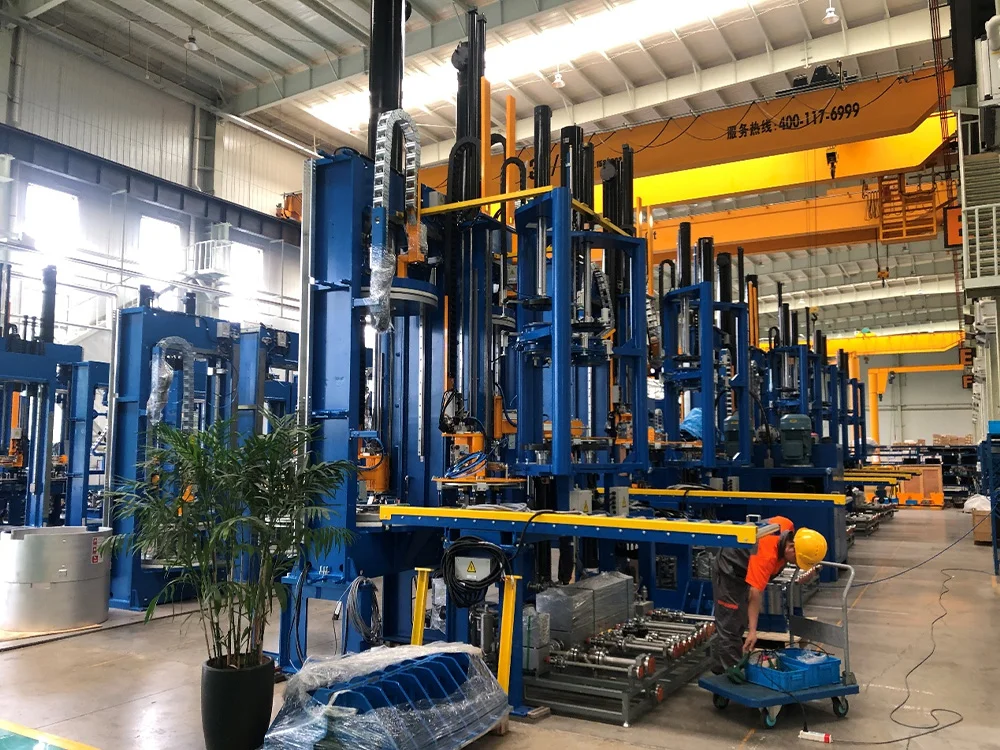In the world of modern tire production, precision, energy efficiency, and versatility are paramount. As automotive standards grow more stringent and the demand for performance tires rises globally, manufacturers seek advanced machinery capable of meeting these evolving needs. In this blog post, SONIWELL, as a high quality tire manufacturing equipment exporter, will share the advantages of high performance hydraulic tire curing press for sale.
Advantages of Hydraulic Tire Curing Press
1. Precision Engineering for Long-Term Operational Reliability
The SPC100 sets a high benchmark in terms of production stability and precision. Its accurate manufacturing quality guarantees reliable long-term machine function, ensuring that operational inconsistencies are minimized over extended use.
* High-precision component alignment reduces mechanical wear.
* Accurate mold positioning ensures consistent product quality.
* Long-lasting frame rigidity supports heavy-duty operations under high clamping forces.
This precision is essential for tire manufacturers aiming for strict tolerances and repeatability in premium tire segments.
2. Designed for High-Performance Tire Curing
The core function of a curing press lies in its ability to mold and vulcanize tires under controlled conditions of heat and pressure. The SPC100 is purpose-built to fulfill the curing requirements of high-performance tires, which often require:
* Uniform heat distribution across the heating plate surface.
* Stable and programmable curing cycles.
* Compatibility with high bead tension and larger tire dimensions.
Whether for ultra-high performance (UHP) or sport utility vehicle (SUV) tires, the press guarantees the optimal bonding of tread, belt, and carcass layers to deliver maximum performance on the road.
3. Post Curing Inflation (PCI) for Enhanced Tire Shaping and Cooling
The integration of Post Curing Inflation (PCI) technology into the SPC100 curing press brings added value to the final tire quality. PCI ensures that tires are cooled in an inflated state after vulcanization, which provides:
* Better shape retention and dimensional stability.
* Reduced deformation during post-curing cooling.
* Minimized flat spotting in high-performance applications.
This step is especially critical for performance tires, where minor deviations in shape can significantly impact vehicle dynamics and handling.

4. Servo Hydraulic System: Efficiency Meets Control
Traditional hydraulic systems are often criticized for their high energy consumption and slower response times. The SPC100 counters this with a servo-controlled hydraulic system, delivering:
* Precise pressure control for accurate clamping and demolding operations.
* Energy savings through on-demand power delivery.
* Reduced system noise and improved thermal efficiency.
Combined with an integrated thermo group valve, this system manages heat and pressure distribution with great precision, directly contributing to lower energy consumption and increased operational efficiency.
5. Versatile Production: Multi-Size Vulcanization in One Machine
Flexibility in production is essential in a market increasingly driven by customized tire offerings and small-batch runs. The SPC100 addresses this demand by supporting simultaneous vulcanization of different tire sizes, offering:
* Adaptive mold configurations.
* Seamless transitions between production runs.
* Reduced changeover times and downtime.
This capability is ideal for manufacturers seeking to produce low-volume or specialty tires without investing in multiple dedicated presses.
6. Dual Mold Control via Single-Mode Operation
Operational simplicity and efficiency go hand-in-hand with modern factory automation principles. The SPC100 features a single-mode function that enables independent control of two molds simultaneously, delivering:
* Increased throughput without requiring double the footprint.
* Simplified user interface and control logic.
* Improved mold utilization efficiency.
This dual-mold capability allows operators to manage production more intuitively while reducing labor and energy costs per tire.
7. Key Technical Specifications of SPC100 Hydraulic Curing Press
To understand the true capabilities of the SPC100, a look at its technical specifications is essential:
* Frame Type: PCR Hydraulic Curing Press (Passenger Car Radial)
* Heating Plate Diameter: 1220 mm – sufficient for a wide range of passenger tire molds.
* Maximum Mold Clamping Force: 2000 kN – ensures robust sealing and uniform pressure across the mold during curing.
* Bead Size Compatibility: 13 to 20 inches – covers most standard and performance passenger car tire sizes.
These specifications highlight the machine' s adaptability and strength, making it suitable for both general and high-end tire production lines.
8. Benefits for Tire Manufacturers
The deployment of the SPC100 and similar high-performance hydraulic tire curing press systems provides numerous strategic advantages for tire manufacturers:
* Higher Production Efficiency: Thanks to faster cycle times and reduced manual intervention.
* Improved Tire Uniformity: Through precise mold handling and controlled curing environments.
* Energy Cost Reduction: With integrated servo-hydraulics and intelligent thermal management.
* Operational Flexibility: Ideal for multi-size, low-volume, or high-performance tire production.
These benefits collectively support lean manufacturing goals and enhance competitiveness in a demanding global market.
Conclusion
As the tire industry shifts towards more customized, performance-oriented, and environmentally-conscious products, the role of smart, efficient, and flexible manufacturing machinery becomes increasingly critical. The SPC100 high-performance hydraulic tire curing press exemplifies these qualities, offering unmatched accuracy, energy efficiency, and operational versatility.
www.soniwellgroup.com
SONIWELL
